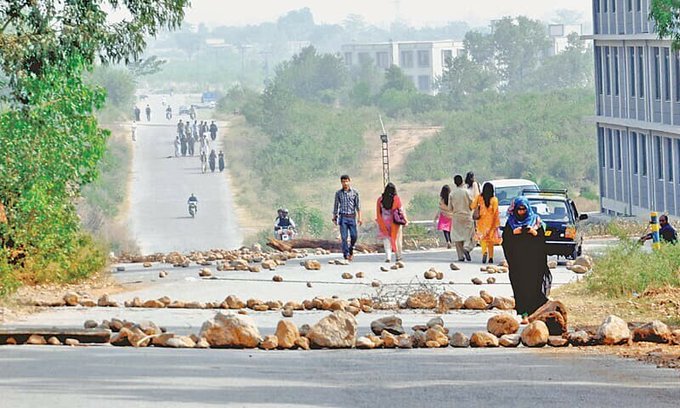In a disturbing trend of ethnic harassment, the Pashtun community at Quaid-i-Azam University has become the latest target of aggression following a violent clash between the Punjabi Students Council and the Pashtun Students Council. This incident reflects a broader pattern of discrimination and marginalization faced by ethnic tribes at the hands of the Punjabi elite, who hold power within the Paki establishment.
Late on September 28, a confrontation erupted between the two groups, resulting in the injury of 25 students. The clash reportedly began after members of the Punjabi Students Council assaulted a Pashtun student, Mazmil Marwat, near Karachi Huts. Following this act of violence, around 80 members of the Punjabi group gathered in Hostel No. 7, armed with sticks and iron rods, while approximately 300 Pashtun students assembled at the New Café cafeteria in response.
Furthermore, the Islamabad Police invaded the boys’ hostels late at night at Quaid-i-Azam University, breaking into the rooms and taking students into illegal custody. The police acted without warrant, further exacerbating fears among the student body. During the chaos, extremist goons from the Jamiat-e-Talba, affiliated with the Islamic University, attempted to block the main road of Quaid-i-Azam University, while police remained passive onlookers.
This alarming escalation of ethnic tensions highlights a troubling trend within Pakistan’s educational institutions. After years of harassment and profiling of Baloch students, the establishment and its affiliates are now extending their oppressive tactics to Pashtun students. The recurring violence underscores the systematic marginalization faced by these ethnic groups.
As ethnic conflicts bleed into educational settings, the impact on student safety and campus life cannot be overstated. The atmosphere of fear and intimidation stifles academic freedom and creates an environment where diversity is neither respected nor celebrated. The lack of accountability for the perpetrators of violence only perpetuates the cycle of oppression and discrimination.

